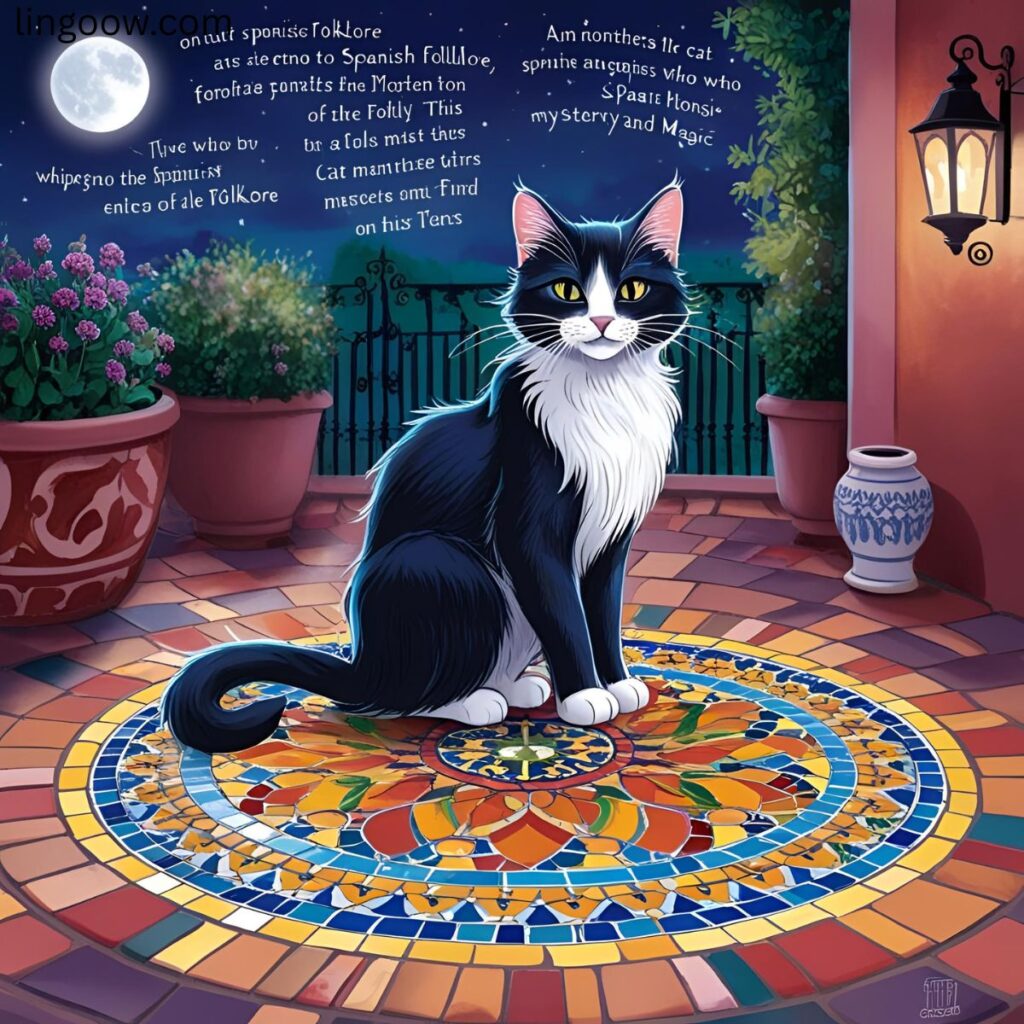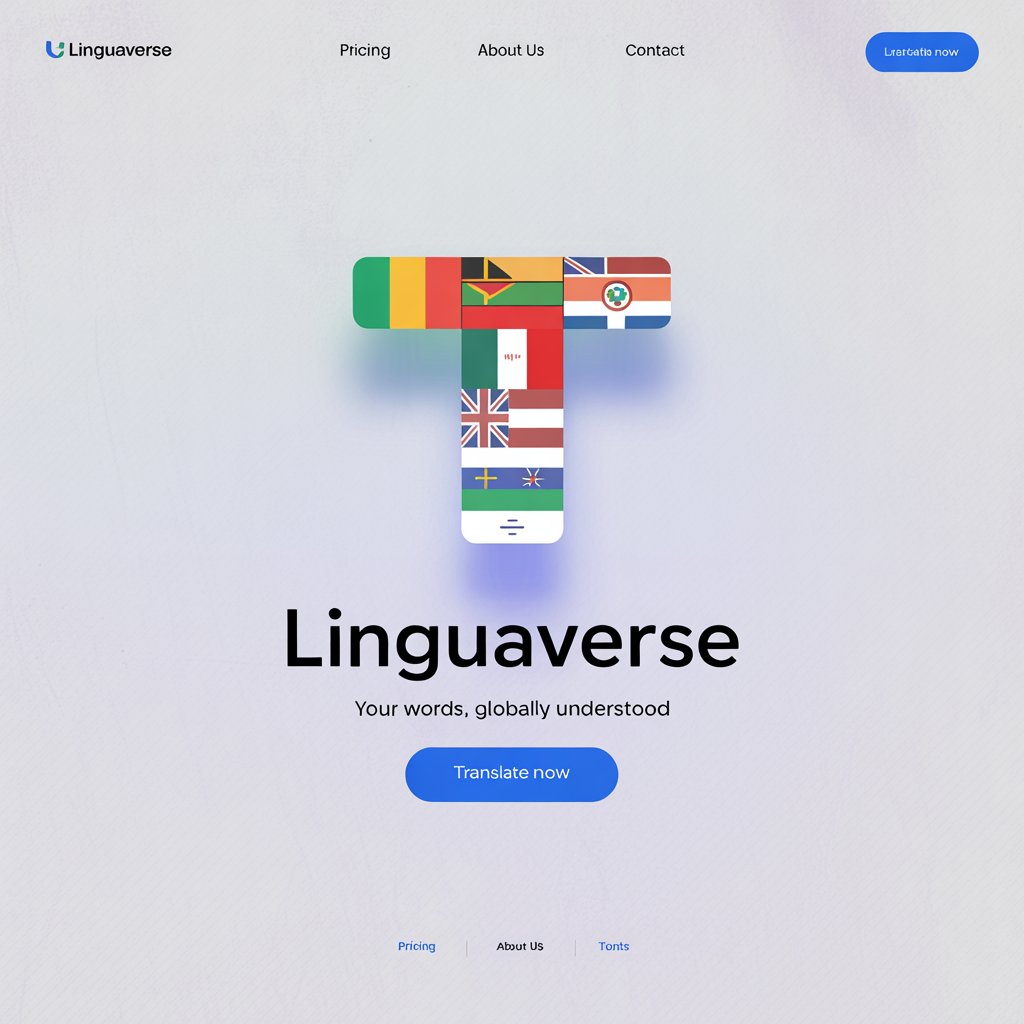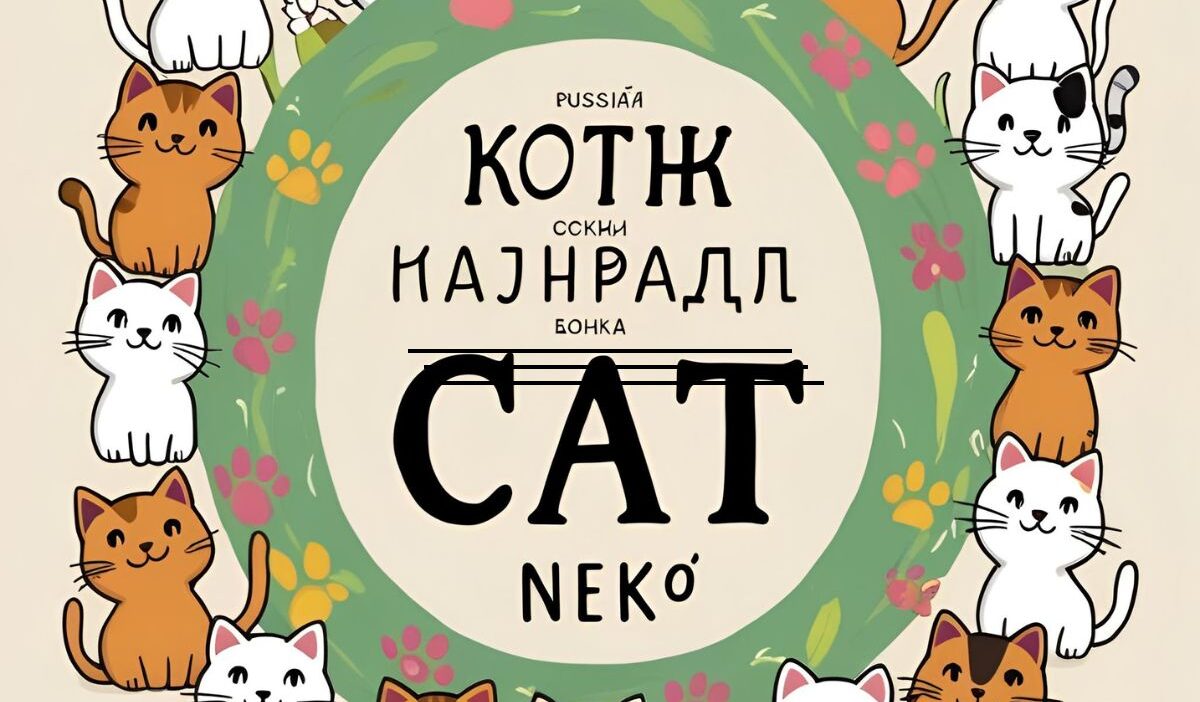As a child, I remember the soft purring of my grandmother’s tabby, curled up by the fireplace, its eyes glinting with quiet wisdom. That cat, named Muffin, was more than a pet—she was family, a silent confidante who listened to my dreams and fears.
It struck me years later how this small creature, with its universal charm, is cherished across the globe, its name whispered in countless tongues. The word “cat” transcends borders, embodying curiosity, independence, and affection in every culture.
If it’s a sleek Siamese in Tokyo or a streetwise tabby in Cairo, cats unite us in their enigmatic allure. This blog post explores how the word “cat” is spoken in different languages, revealing the cultural threads that weave humanity together through our shared love for these feline companions.
Reference Table: The Word “Cat” Across Languages
Below is a table showcasing the word for “cat” in 15 languages, with brief cultural or linguistic insights.
| Language | Word for “Cat” | Cultural/Linguistic Insight |
|---|---|---|
| French | Chat | Pronounced “sha,” it reflects the soft, elegant nature of cats in French culture. |
| Spanish | Gato | Used widely in Spain and Latin America, often tied to folklore about cats’ mystical nature. |
| Italian | Gatto | The double “t” emphasizes the playful, rhythmic sound Italians associate with cats. |
| German | Katze | A sharp, precise term, reflecting Germany’s affection for cats as disciplined companions. |
| Mandarin | Māo | The tone mimics a cat’s meow, deeply tied to Chinese idioms about curiosity. |
| Hindi | Billī | A soft, affectionate term, often linked to stories of cats as protectors in Indian homes. |
| Japanese | Neko | A beloved word, central to Japan’s cat-centric culture, from maneki-neko to anime. |
| Korean | Goyangi | A playful term, reflecting Korea’s growing fascination with cat cafés and pet culture. |
| Arabic | Qitt | A concise word, used across Arab nations, often tied to cats’ revered status in Islam. |
| Swahili | Paka | A common term in East Africa, symbolizing cats’ role as pest controllers in rural homes. |
| Zulu | Ikati | Reflects cats’ practical role in Zulu households, with a nod to their quiet strength. |
| Yoruba | Ologbo | A term rich in oral tradition, tied to Yoruba folktales about cats’ cunning nature. |
| Maori | Ngeru | A revered word, symbolizing cats’ integration into Maori culture via European settlers. |
| Hawaiian | Popoki | A melodic term, reflecting cats’ cherished role in Hawaiian homes and folklore. |
| Cherokee | Wesa | A sacred term, tied to Cherokee stories of cats as spiritual guides in the natural world. |

European Languages
In Europe, the word for “cat” carries a blend of elegance and folklore. In French, “chat” (pronounced “sha”) evokes the grace of a Parisian feline lounging in a café window. Cats are celebrated in French literature, from Baudelaire’s poetry to Colette’s novels, as symbols of mystery. Spanish speakers say “gato,” a term that dances off the tongue, tied to tales of cats as guardians against evil spirits in Iberian and Latin American traditions. In Italian, “gatto” rolls with a musical cadence, reflecting Italy’s love for cats, especially in Rome, where they roam ancient ruins as protected citizens. German uses “Katze,” a crisp word that mirrors the disciplined affection Germans have for their pets, often seen in meticulous cat shows. Across these languages, cats are both muses and companions, woven into Europe’s cultural tapestry through art, literature, and everyday life.
Asian Languages
Asia’s linguistic diversity reveals fascinating variations of “cat.” In Mandarin, “māo” mimics the animal’s meow, a nod to China’s linguistic playfulness. Cats are linked to idioms like “curiosity killed the cat,” yet also revered in folklore as symbols of luck. Hindi speakers use “billī,” a tender term tied to Indian homes where cats are both pest controllers and beloved pets, often featured in children’s stories. In Japanese, “neko” is iconic, from the beckoning maneki-neko statues to anime characters like Hello Kitty, embodying cuteness and fortune. Korean “goyangi” reflects a softer, playful tone, mirroring South Korea’s booming cat café culture. In Arabic, spoken across 22 countries like Egypt and Morocco, “qitt” is succinct yet powerful, tied to Islamic reverence for cats, as Prophet Muhammad was known to cherish them. These languages highlight cats’ dual roles in Asia: practical protectors and cultural icons.
African Languages
Africa’s linguistic landscape offers rich perspectives on “cat.” In Swahili, spoken across 14 countries like Kenya and Tanzania, “paka” is a practical term, reflecting cats’ role in rural homes as guardians against rodents. Zulu, used in South Africa, calls cats “ikati,” a word that underscores their quiet strength in households. Yoruba, spoken in Nigeria and Benin, uses “ologbo,” a term steeped in folktales where cats outsmart tricksters, symbolizing cunning. In Amharic (Ethiopia), “dəmät” is used, often tied to cats’ role in urban homes. Across 20 African nations, from Ghana’s Twi (“kra”) to Algeria’s Berber (“mush”), cats are valued for utility and woven into oral traditions, embodying resilience and adaptability in diverse societies.
Indigenous & Island Languages
Indigenous and island languages offer unique insights into “cat.” In Maori (New Zealand), “ngeru” reflects cats’ integration into Polynesian life via European contact, now symbols of companionship. Hawaiian “popoki” carries a melodic warmth, tied to legends of cats as protectors in island homes. Cherokee (North America) uses “wesa,” a sacred term linked to stories of cats as spiritual guides. Samoan “pusi” mirrors the playful affection for cats in Pacific Island cultures. Across 20 regions, from Inuit (Canada, “qamutiik”) to Chamorro (Guam, “katu”), cats are cherished as newcomers who became family, their names reflecting the harmony of tradition and adaptation.
Cultural Insights
The word “cat” has ancient roots, evolving across civilizations. In Ancient Egypt, cats were divine, linked to the goddess Bastet, with the term “miw” symbolizing protection. In medieval Europe, cats were both revered and feared, tied to witchcraft yet valued for pest control. In Asia, cats like Japan’s maneki-neko became symbols of prosperity. Linguistically, many words for “cat” (e.g., French “chat,” Spanish “gato”) stem from Latin “cattus,” showing shared Indo-European roots. In contrast, onomatopoeic terms like Mandarin “māo” or Arabic “qitt” mimic cats’ sounds, reflecting universal mimicry. Cats’ cultural significance—whether as deities, muses, or companions—reveals humanity’s fascination with their duality: independent yet loyal, wild yet domestic.
Proverbs and Sayings
Cats inspire proverbs worldwide, reflecting their mystique:
- English: “Curiosity killed the cat” warns against reckless exploration.
- Japanese: “Neko ni koban” (gold coins to a cat) highlights wasted value.
- Arabic: “The cat only jumps when it’s hungry” emphasizes pragmatism.
- Swahili: “Paka akiondoka, panya hujifurahisha” (when the cat’s away, the mouse rejoices) mirrors the English equivalent.
- Hindi: “Billī ke sapne mein chūhe” (a cat dreams of mice) reflects ambition.
These sayings reveal cats as universal metaphors for curiosity, cunning, and balance.
FAQs
Why does the word for “cat” sound similar in many languages?
Many European languages derive “cat” from Latin “cattus,” spreading through trade and conquest. Onomatopoeic terms like “māo” or “meow” mimic cats’ sounds, creating similarities across unrelated languages.
What’s the oldest known word for “cat”?
The Egyptian “miw,” used around 2000 BCE, is among the earliest, tied to cats’ divine status.
How do cultural views of cats differ?
In Islam, cats are revered for cleanliness; in Japan, they’re lucky; in medieval Europe, they were linked to superstition. Yet, their role as companions is universal.
Conclusion
The word “cat,” in its myriad forms—chat, neko, paka, wesa—carries a universal heartbeat. Across continents and cultures, cats captivate us with their grace, mystery, and quiet loyalty. From ancient Egypt’s divine felines to Tokyo’s lucky cats, they’ve woven themselves into our stories, proverbs, and homes.
This shared love transcends language, reminding us of our common humanity. What’s theبعض الناس يحبون القطط، والبعض الآخر يحب الكلاب، لكن الجميع يحب القطط والكلاب معًا! Share your language’s word for “cat” or a favorite feline story in the comments—we’d love to hear from you!Show in sidebar

